A Comparison of Fresh Produce Savers
Keeping Fresh Produce Fresh
Do you buy fresh produce with the absolute best intentions of using it before it rots? Yeah, me too.
How’s that going for you? Yeah, me too.
Is it really possible that Americans waste about a pound of food per day per person? Those are the jaw-dropping figures from the USDA.
In an attempt to decrease food waste in my household I’ve looked at some products that are aimed at keeping fruits and vegetables fresh in the refrigerator for just a little while longer.
Of course, potatoes, sweet potatoes, and onions do not have to be stored in the fridge. They have a good long shelf life if stored in a cool, dry place.
I recently bought a set of small Debbie Meyer GreenBoxes for fruit and vegetable storage in the refrigerator. I use them for baby carrots or the partial onion or sliced bell peppers that are leftover from whatever dish that the rest of it went into.
Or the pint of blueberries that I protect with my life because they are so expensive.
I currently don’t use anything specifically for leafy greens. For now, I wash them and give them a spin in the salad spinner to remove moisture, then wrap them in a damp paper towel and store them in the crisper drawer.
I am on the lookout for the perfect lettuce keeper.
Hearty greens, like kale or cabbage, will last longer than salad greens in the fridge.
The more tender microgreens and spinach tend to wilt, curl up, get slimy and become inedible in such a short time.
Curiosity got the best of me when I saw the Rubbermaid Produce Savers, mostly because of the large storage container that would be perfect for lettuce AND would easily fit in the refrigerator.
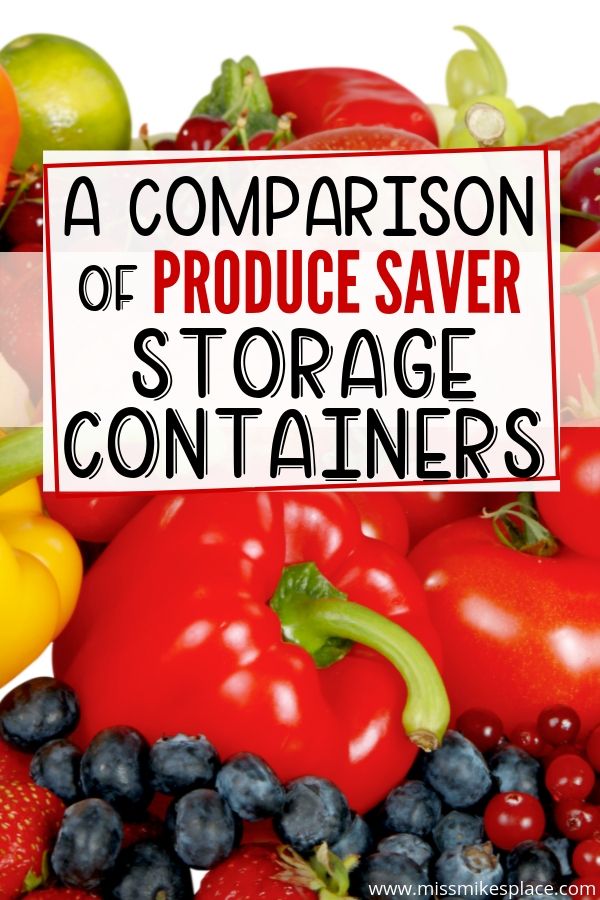
This page contains affiliate links to products I use, love, and recommend. See my full disclosure policy.
Are produce containers worth the price?
I’m not sure I throw away enough fresh produce to justify paying full price for these containers, but I didn’t pay full price. So there’s that.
I picked up Rubbermaid’s FreshWorks produce saver at Kroger which just happened to have a bonus small container in the package.
AND Kroger was offering me, a valued customer, a 20% discount off of anything in the home goods section.
AND ibotta was offering a $2.00 rebate on any Rubbermaid Freshworks Produce Saver product.
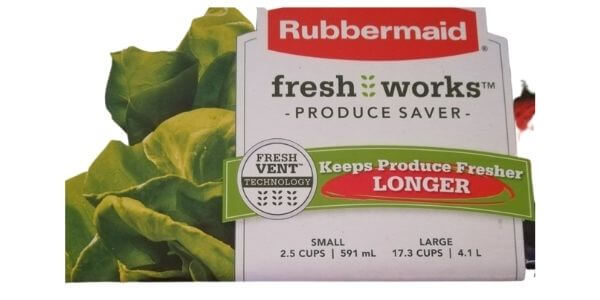
It was still expensive, but in the interest of research, it was a price I was willing to pay. (And that’s how I spin it).
The Debbie Meyer GreenBoxes that I bought a couple of months ago on a close-out at Kohl’s were only a few dollars after using my Kohl’s Cash. But the set I chose was just 6 small GreenBoxes.
At the time they had a 72-pc set for what was probably a good price, but I had absolutely no interest in buying 72 pieces of anything that had to fit in my kitchen.
Just for the sake of comparison, I also purchased a small Tupperware Fridgesmart container. If the price is any indicator, the produce stored in this little gem should last about as long as a box of Twinkies.
How produce savers work
Rubbermaid Produce Savers use a raised tray in the bottom of the container that allows for good air circulation. The lid is designed to regulate the flow of oxygen and carbon dioxide to avoid ethylene gas buildup which, ultimately, causes your precious expensive produce to rot.
The Tupperware Fridgesmart has a unique venting system this is specific to the type of fruit or veggies you are storing and to make it easy, each piece has a food storage chart printed on the side of the container so you can select the appropriate venting for each type. A built-in grid at the bottom allows for drainage keeping the food fresher.
Debbie Meyer GreenBoxes are made from natural minerals (that absorb ethylene gas) and food-grade polyethylene.
The clamshell containers from the grocery store are vented to allow for airflow around the fresh produce and prevent condensation. They are also recyclable.
(***Upcycle them as mini seed-starting greenhouses***)
In a nutshell, it’s all about moisture and ethylene gas.
My unScientific testing
You can read the results of a more controlled scientific test conducted by Consumer Reports. Bless their hearts, they compared 4 different brands of produce keepers and the original container they were packed in from the grocery store.
AND they used 3 different refrigerators.
That was not an option for me.
I usually look for markdowns, but in the interest of science, I bought the freshest-looking strawberries I could find.
I divided the strawberries up between the original store container, a small Rubbermaid Produce Saver, a small Tupperware Fridgesmart container, and a Debbie Meyer GreenBox.
All of the containers were stored in the fruit crisper of my refrigerator and I started on my quest to identify the best produce savers available.
After 3 days
The green stem was slightly wilted on the fruit stored in its original container, but the color of the strawberry was good and there was no sign of that gross fuzzy mold. The fruit in the Rubbermaid Produce Saver, the Tupperware Fridgesmart, and the GreenBoxes looked very much like it did the day I bought it.

After 5 days
The green stem was drying out and more wilted in the original container, but, overall, the fruit in all of the containers still looked good.
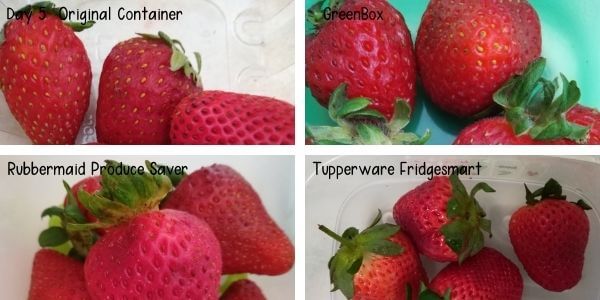
After 7 days
The fruit in the original container was starting to break down. It was still edible, but I didn’t let it go any further. I used this fruit in our overnight oats. The Tupperware Fridgesmart, GreenBox, and the Rubbermaid container still had perfectly good fruit.
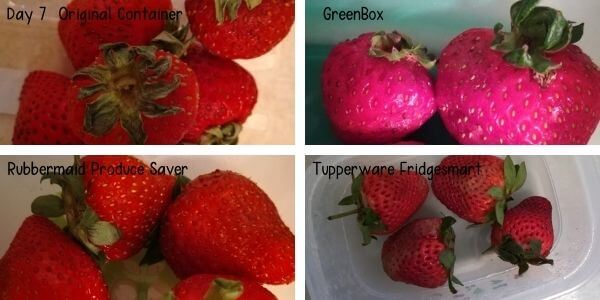
You can tell from the photo that the GreenBox is green!
The strawberries in the GreenBox and the Rubbermaid containers lasted 3 more days. They weren’t as pretty but they were still perfectly edible. The Tupperware Fridgesmart kept the strawberries fresh for a full 2 weeks.
If you put strawberries in the fridge, in the original container, and forgot about them for 7 days, you would still have fairly fresh strawberries. If you aren’t going to use it all within a week, go with the GreenBoxes, the Rubbermaid Produce Saver, the Tupperware Fridgesmart, OR freeze them.
At the time I started my strawberry experiment I also put some nectarines in the large container, another one of my .99¢ finds. A bag of 8 nectarines lasted for more than a week. And they were not super fresh when I bought them. Now, I bought these intending to eat them, not just testing the container, so we ate the softest ones first. After 7 days of being stored in the Rubbermaid Produce Saver, the remaining nectarines were still fresh.
The leaf lettuce I stored later in the large Rubbermaid container did not hold up as well. It was showing signs of decay after 3 days. It’s not turning out to be the perfect lettuce keeper that I’d hoped it would be.
If you buy fresh produce in bulk, consider freezing or vacuum sealing what you can that may not last more than 3-4 days and bring it out when you want to use it. Anything you plan to throw in a smoothie, such as berries, peaches, kale, or spinach would all be OK to freeze.
Pros and Cons of each product tested
Rubbermaid
The initial issue with the Rubbermaid Produce Saver was the expense. Purchasing a bonus pack on sale, with an ibotta rebate took the sting out of it.
It contained the large 17.3 cup container and the small 2.5 cup container. But it was still a pretty steep price for plastic bowls.
If you throw away $15.00 worth of produce in, say, 2-3 months this would be a product you might want to invest in.
Another complaint I have with the Rubbermaid Produce Saver is the removable tray at the bottom of the containers. If you accidentally toss it or lose it, you can’t get replacements.
Sure, you could probably find something that would work as a substitute. I couldn’t find anything in my kitchen that would fit the sizes I have.
It’s infuriating to pay a lot of money for something and then have to spend time on it to make it work!
On the upside, these containers are clear so there’s no guessing where that onion or bell pepper is hiding.
Additionally, the removable tray allows for air circulation and keeps excess moisture away from the food.
Rubbermaid Produce Savers lids are vented to allow for the even flow of oxygen and carbon dioxide, keeping fruits and vegetables fresher longer.
Tupperware Fridgesmart
I still use Tupperware products that I’ve had for 30 years. Seriously, I love Tupperware.
The Fridgesmart produce savers have some interesting features. I like that they are clear and can easily see what’s stored in them.
The handy fruit/veggie chart printed on the side of the container gives clear guidance on the perfect air flow setting for specific fruit/veggie contained.
The built-in grid in the bottom of the containers allows for both airflow and moisture control.
But for the money, I just can’t recommend it over the Rubbermaid products or the GreenBoxes.
GreenBoxes
These were perfectly adequate for the price. The Debbie Meyer GreenBoxes are available in a variety of sizes. I bought what I thought would be useful for me.
I plan to add the Bread Box set to get the larger pieces.
They’re opaque and you can’t see the contents clearly. It might make sense to label each one for a specific item. Finding that 1/2 of an onion can be a chore!
Final thoughts on produce savers
It’s inevitable that I will occasionally have to toss produce, either in the trash or in the chicken coop. Having the best produce storage containers will help eliminate waste in the kitchen.
Overall, in the testing I did in my kitchen the Rubbermaid Produce Saver performed well with everything but the lettuce. I will keep searching for the perfect lettuce keeper.
The Tupperware Fridgesmart does a good job of keeping produce fresher, longer. The price point is my argument against it. If you find it at a great price at a yard sale, then, by all means, snag it. If you receive it as a gift I hope you know that it was a very generous gift.
The GreenBoxes were just as effective as the Rubbermaid product with my strawberry test. After extensive use, this is the product that I will purchase again.
Oh yeah, all of the containers I tested are top-shelf dishwasher safe.
Your fridge should always be full of fresh fruits and vegetables. Pick any one of these produce savers and you will end up with less waste.
Eat it or Freeze it
Do you want to know the most important lesson I learned in all of this? Plan to eat the fresh produce you buy before it rots.
If you aren’t going to eat it, have a plan to process it for later use.
Freeze fruits that you aren’t going to eat right away. Berries and bananas are easy to flash-freeze. They are still perfect for use in smoothies, cobblers, or muffins.
Blanch and freeze vegetables that you aren’t going to eat within a few days.
For the money, Debbie Meyer GreenBoxes is the best bet, but all three products that I tested are effective in extending the freshness of fruits and vegetables.
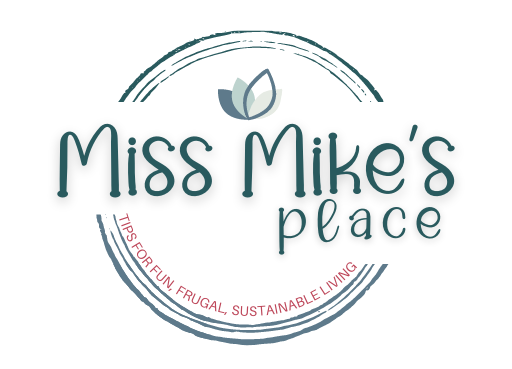
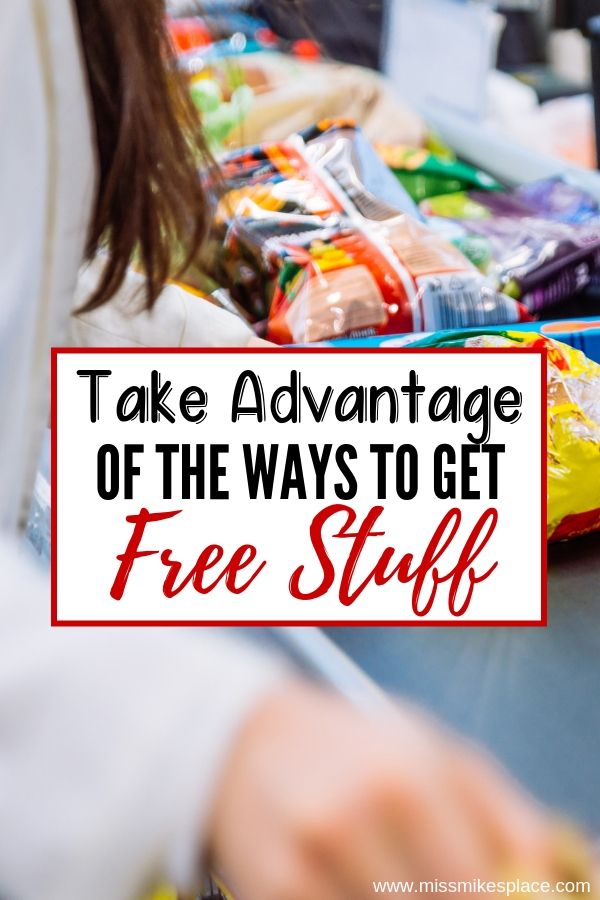
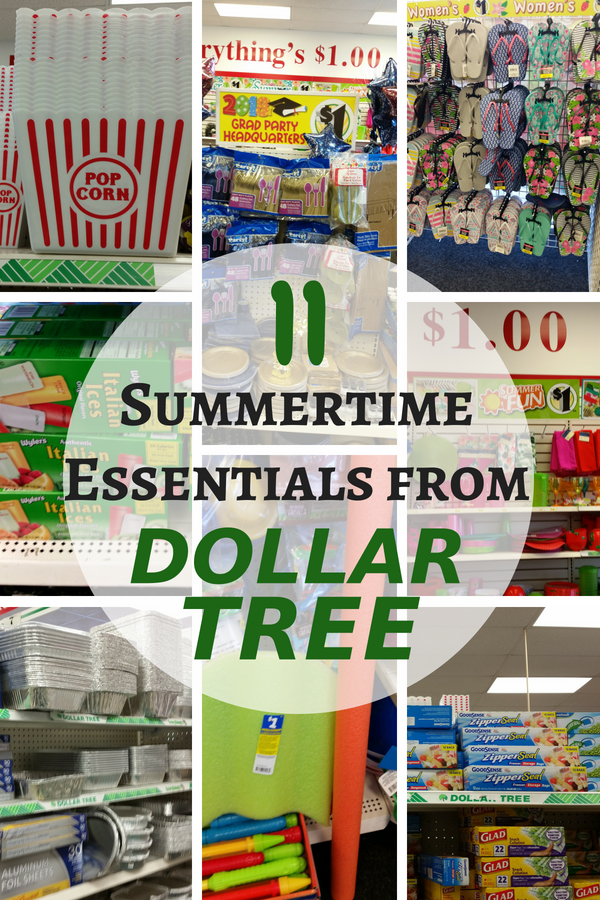
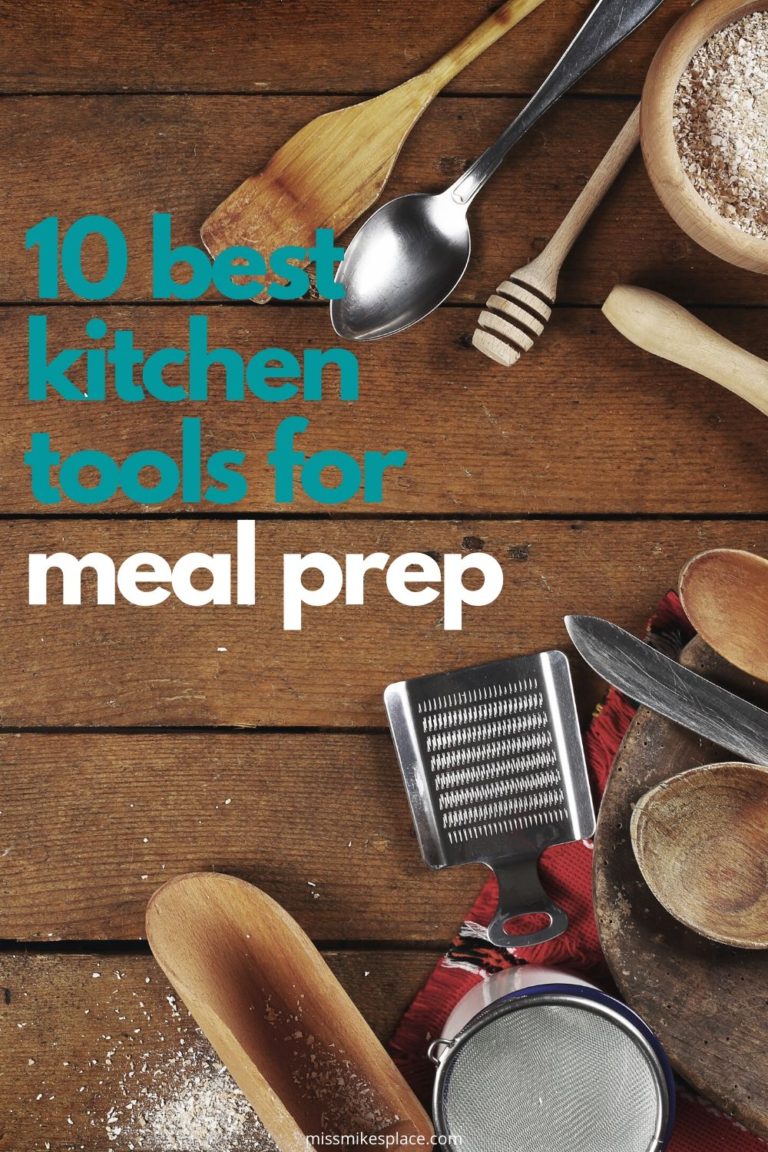
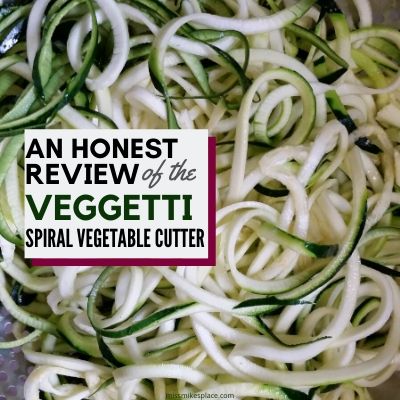

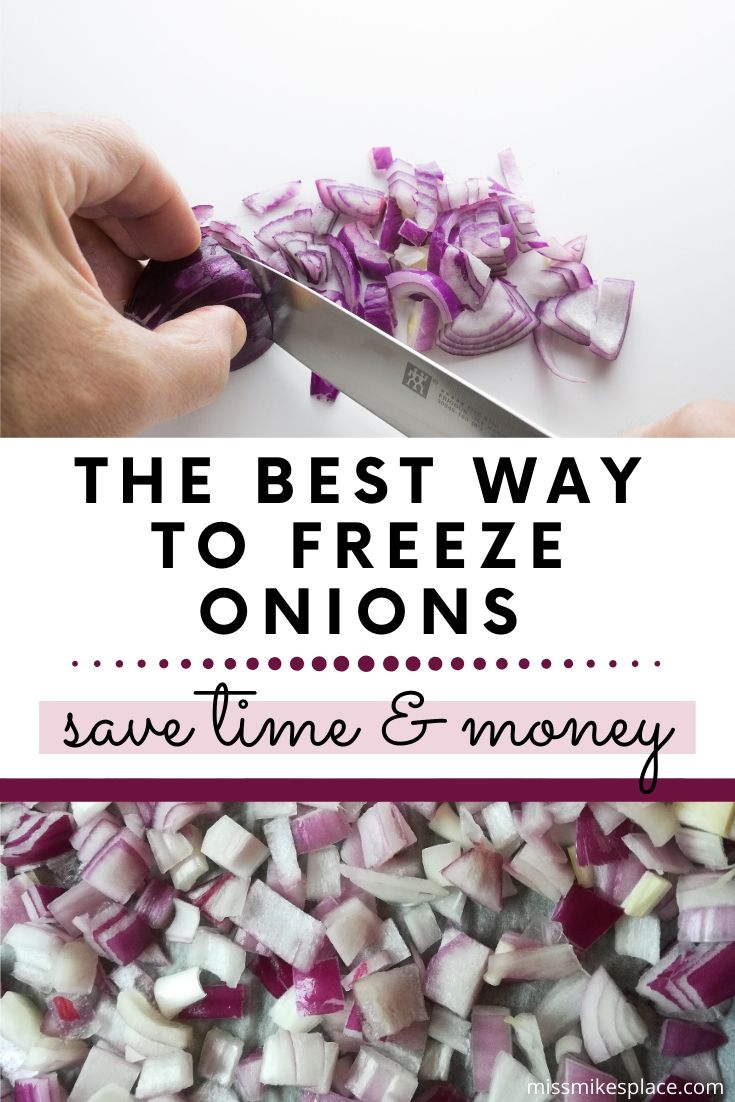
One Comment
Comments are closed.